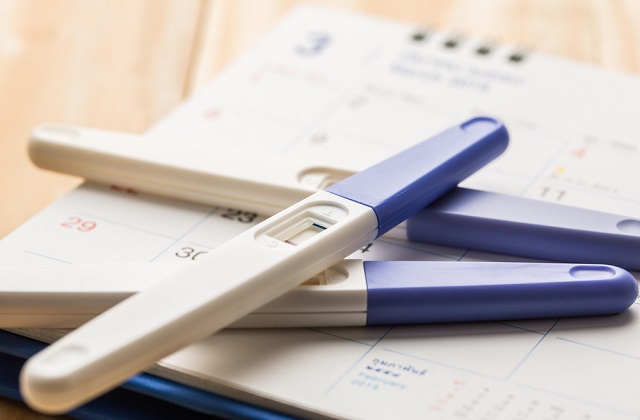What To Do When Delivery is Delayed
Your due date came and passed, but there’s still no sign of your baby. Why?
Don’t worry, because not all pregnant women will deliver on the expected date of birth. Your due date is only an estimate of when labour is expected to occur. Most babies are born between 38 to 42 weeks of pregnancy, which is called ‘at term’. Babies born before 37 weeks are known as ‘preterm’ and babies born after 42 weeks are known as ‘post-term’.
Why is my baby overdue?
There is no known cause as to what exactly starts off labour and why some babies are born earlier or later. However, it is plausible that the position of your baby can affect the start of labour. Your baby may not have moved into a position that is suitable for birth. The best position for the baby to be in during birth is the anterior position where your baby is head-down, with the back of his head towards the front of your tummy. Labour will more likely be smoother when your baby is in this position. This is because the top of your baby’s head exerts pressure evenly on your cervix. During contractions, this pressure will help your cervix to widen and help your body produce the hormones it needs for labour.
However, your baby may not be in an anterior position. If your baby is in a bottom-down position with head up and feet down, it is known as the ‘breech’ position. If your baby is head-down, but the back of his head is towards your back, it is known as the ‘occipito-posterior’ position. In these cases, you may want to try certain positions to help your baby move into an anterior position. While these positions are not guaranteed to help your baby turn into the right position, they are still worth a try.
- Be on your hands and knees for 10 minutes, two times a day.
- When you are sitting, tilt your pelvis forward. Ensure that your knees are always lower than your pelvis.
- Move around if your job requires you to sit a lot.
- When you watch TV, lean forward using a birth ball. If you are sitting, make sure that you’re your knees are lower than your pelvis.
Another reason why your baby might be ‘late’ is because your baby might not be ready for birth. The due date given by your gynae is only an estimate for when delivery is most likely to take place, but it may not always be the best time for the baby to be born. So the best thing to do is to be patient and to trust that your body knows best.
What should I do while waiting for labour?
1. Frequent check-ups
You will need to visit your gynae frequently to monitor the health of the baby and the condition of the uterus such as baby head circumference, baby’s position, placental location and placental maturity. You may need to go to the hospital 1 to 3 times in a week. If you are more than one week past your due date, your doctor may monitor the heart rate of your baby, amniotic fluid volume assessment and conduct ultrasound.
2. Keep yourself relaxed
The contractions of your uterus are caused by the hormone oxytocin. When you are anxious, stressed or upset, your stress hormones (e.g. catecholamines, adrenaline) rise and stop the release of oxytocin, thus delaying labour.
3. Watch out for labour signs
If the following signs appear, you should consult your doctor:
- Abdominal pain. There is regular pain from the contraction of uterus.
- Water breaking. Once your water breaks, you should go to the hospital right away.
- Vaginal bleeding
- Changes in vision, sudden swelling of the face, hands or feet
- Severe headache
4. Have plenty of rest
5. Eat and drink regularly to keep your body strong and ready for delivery
Labour induction
In some cases, you may need to induce labour as there is a higher risk of stillbirth or problems for the baby if you are over 42 weeks pregnant.
Induction of labour can happen in 2 ways:
1. Prostaglandin pessary
Prostraglandins are hormones that are produced in the body to induce labour. A prostraglandin pessary is a soluble device containing prostraglandin inserted into your vagina. It helps to soften the cervix and allow labour to progress. This can take 24 hours to work.
2. Syntocinon drip
A syntocinon drip contains oxytocin, the hormone which helps your womb to contract. A syntocinon drip gradually releases oxytocin into your body to stimulate contractions. Your baby’s heartbeat will be monitored during this process to ensure that the drug is not putting him/her under stress.
Induced labour is usually more painful than natural labour. However, pain relief options are still available to you even if you undergo induced labour.
Women who have induced labour are also more likely to have an assisted delivery where forceps or ventouse suction are used to help the baby out.
Sources:
Babycentre. (2017, June). Getting your baby into position for birth. Retrieved from https://www.babycentre.co.uk/a544493/getting-your-baby-into-position-for-birth#section5
Overdue baby - what happens if my baby is late? (n.d.). Retrieved from https://www.nct.org.uk/birth/what-happens-if-my-baby-%E2%80%98late%E2%80%99
It takes a village to raise a child !
Join our Facebook Group For 2025 SG Mummies or Facebook Group For 2026 SG Mummies
2024 SG Mummies Whatsapp Group by EDD Month or 2025 SG Mummies Whatsapp Group By EDD Month







